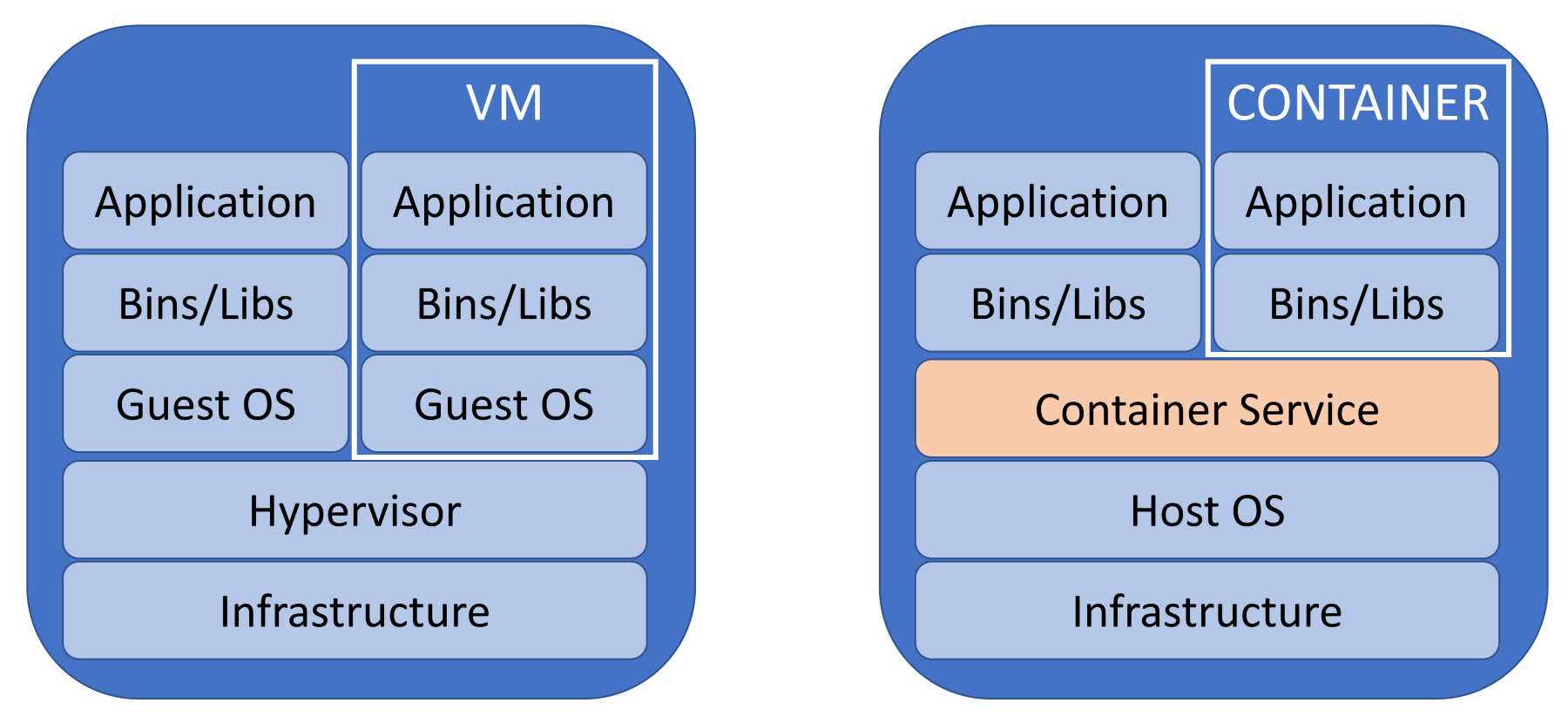Containers are a fantastic technology when it comes to allowing more portability of applications or services across operating systems and physical or virtual infrastructure. The idea of containers is to provide an abstraction layer between an application/service and the underlying operating system, similar to the abstraction layer provided by hypervisors between an operating system and the underlying hardware. This new abstraction layer is intended to allow an application and all ancillary files to be packaged together in a lightweight and portable container that can easily be moved from one host to another. An application that is placed into a container is therefore more (or even completely) separated from the infrastructure that it is running on top of. There are no requirements to ensure that the infrastructure is regularly patched or even held on a certain patch level. There are no dependencies between the container and the infrastructure that hosts the container.

Comparison...



